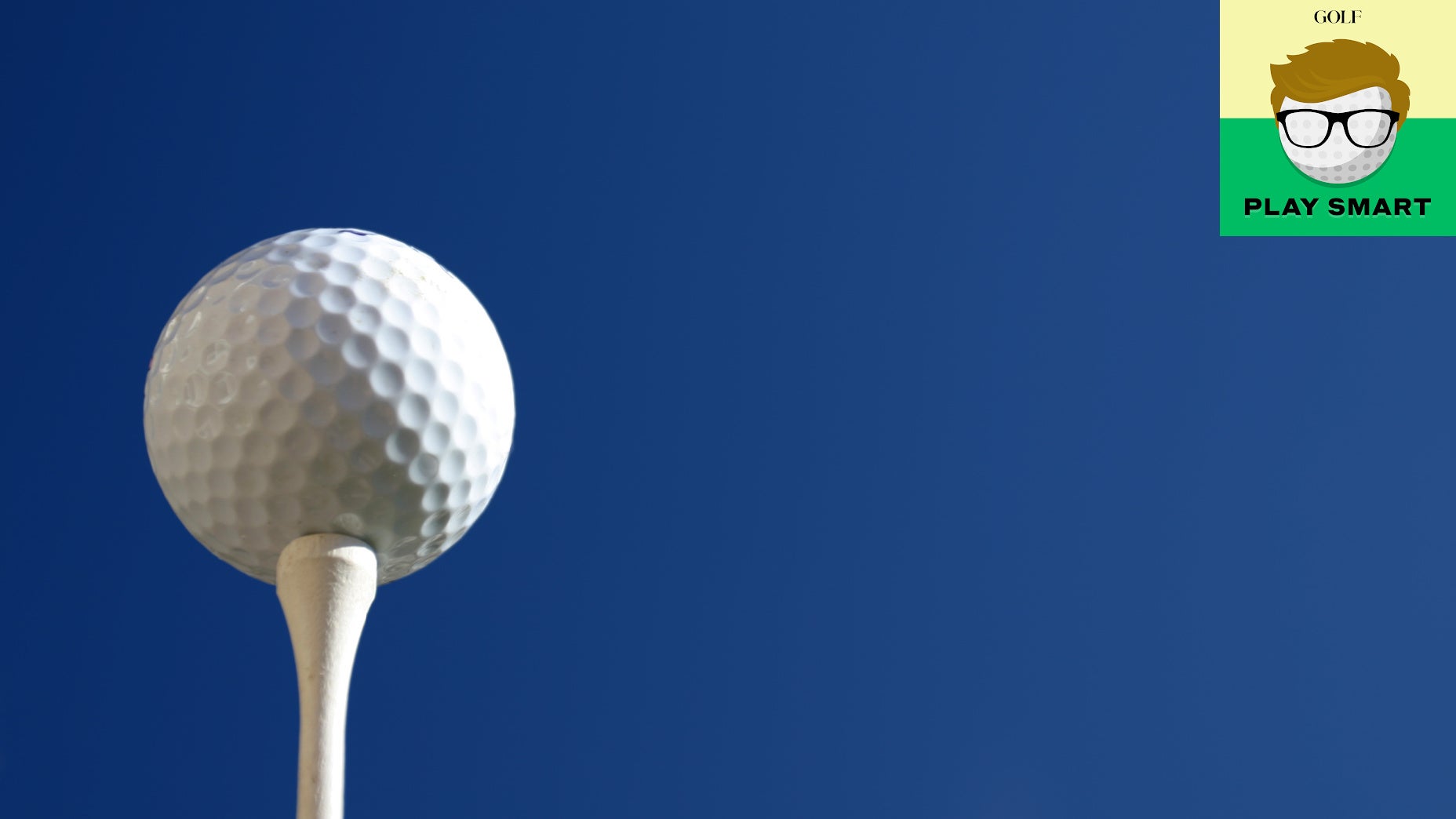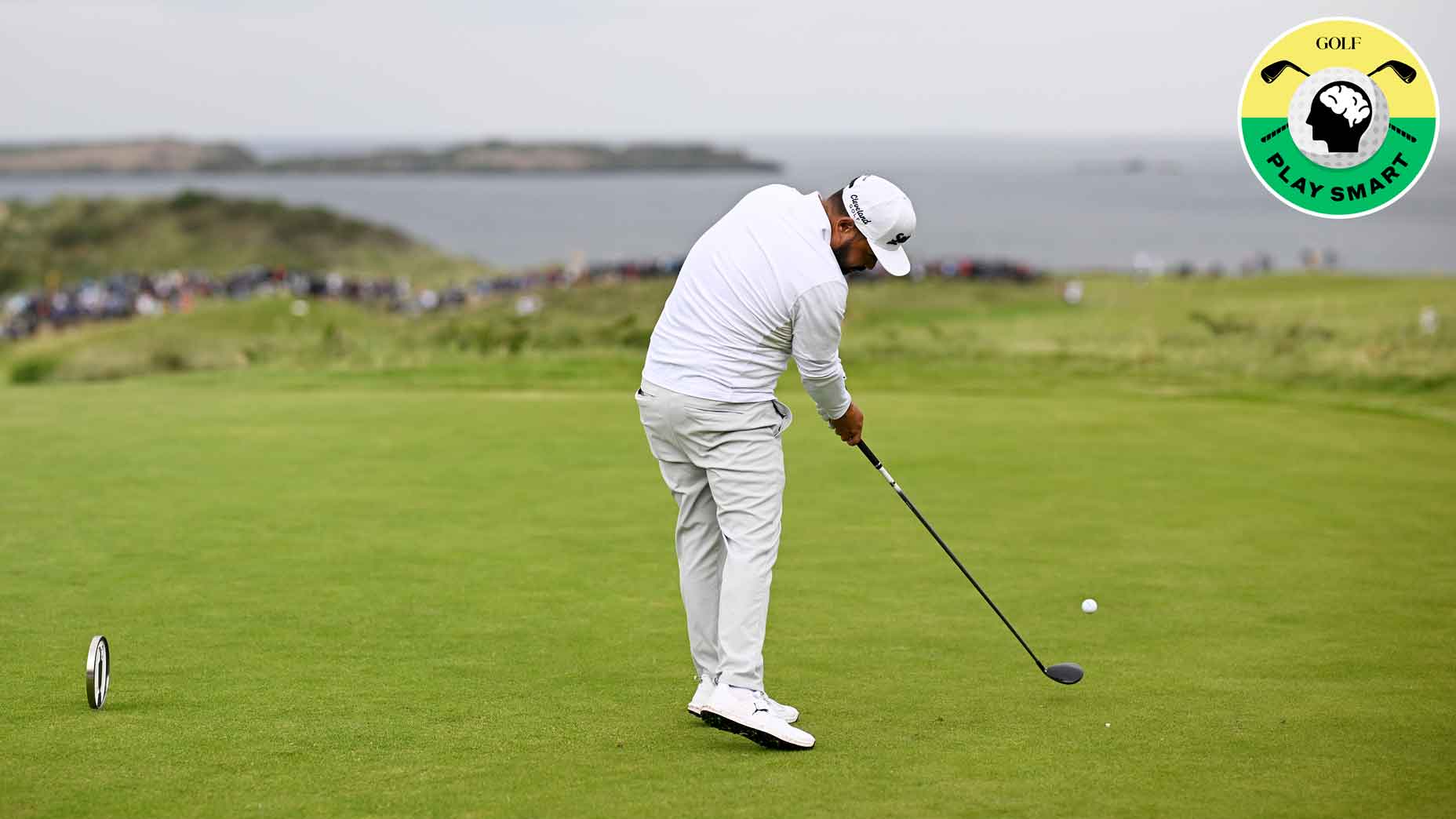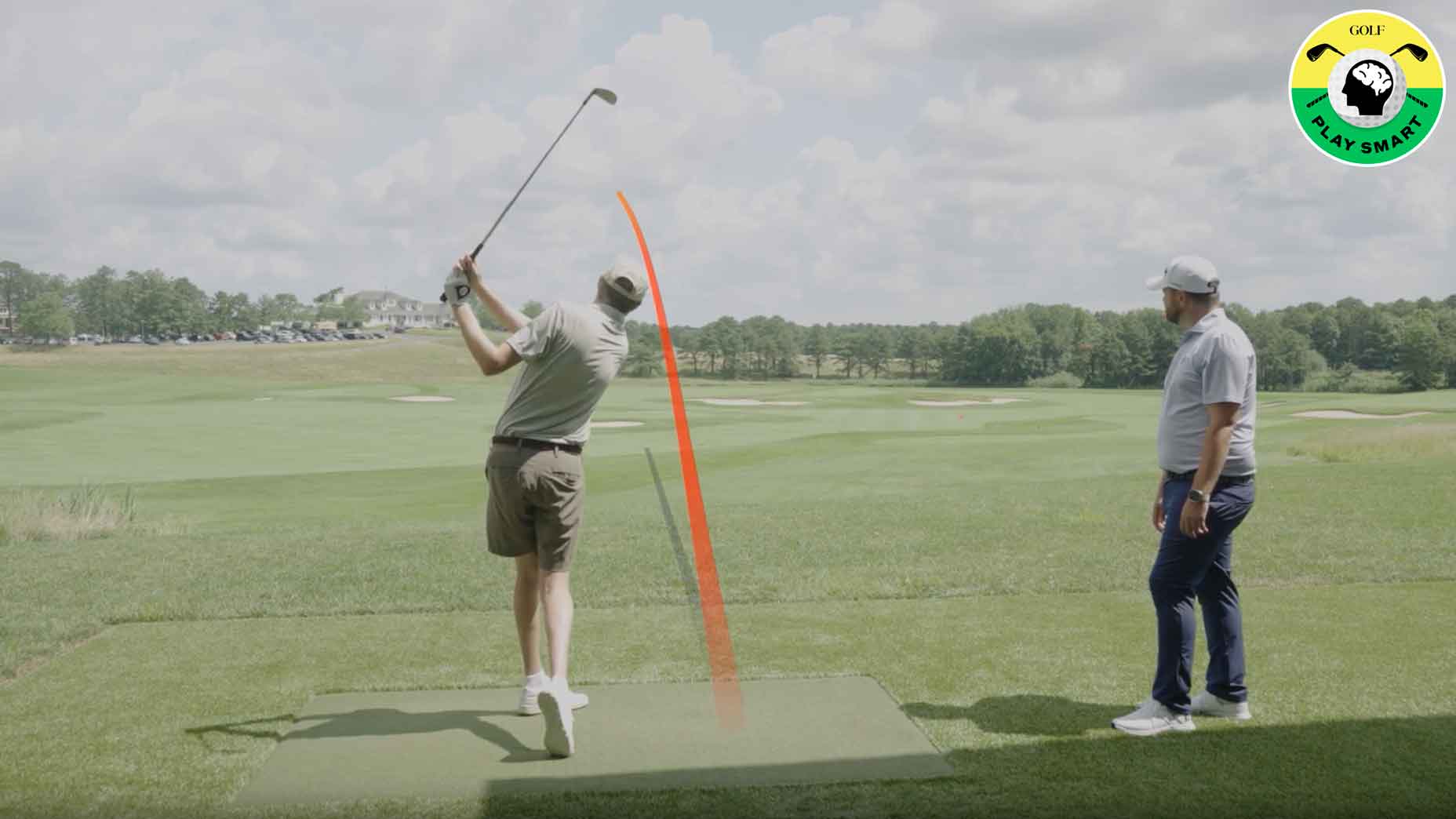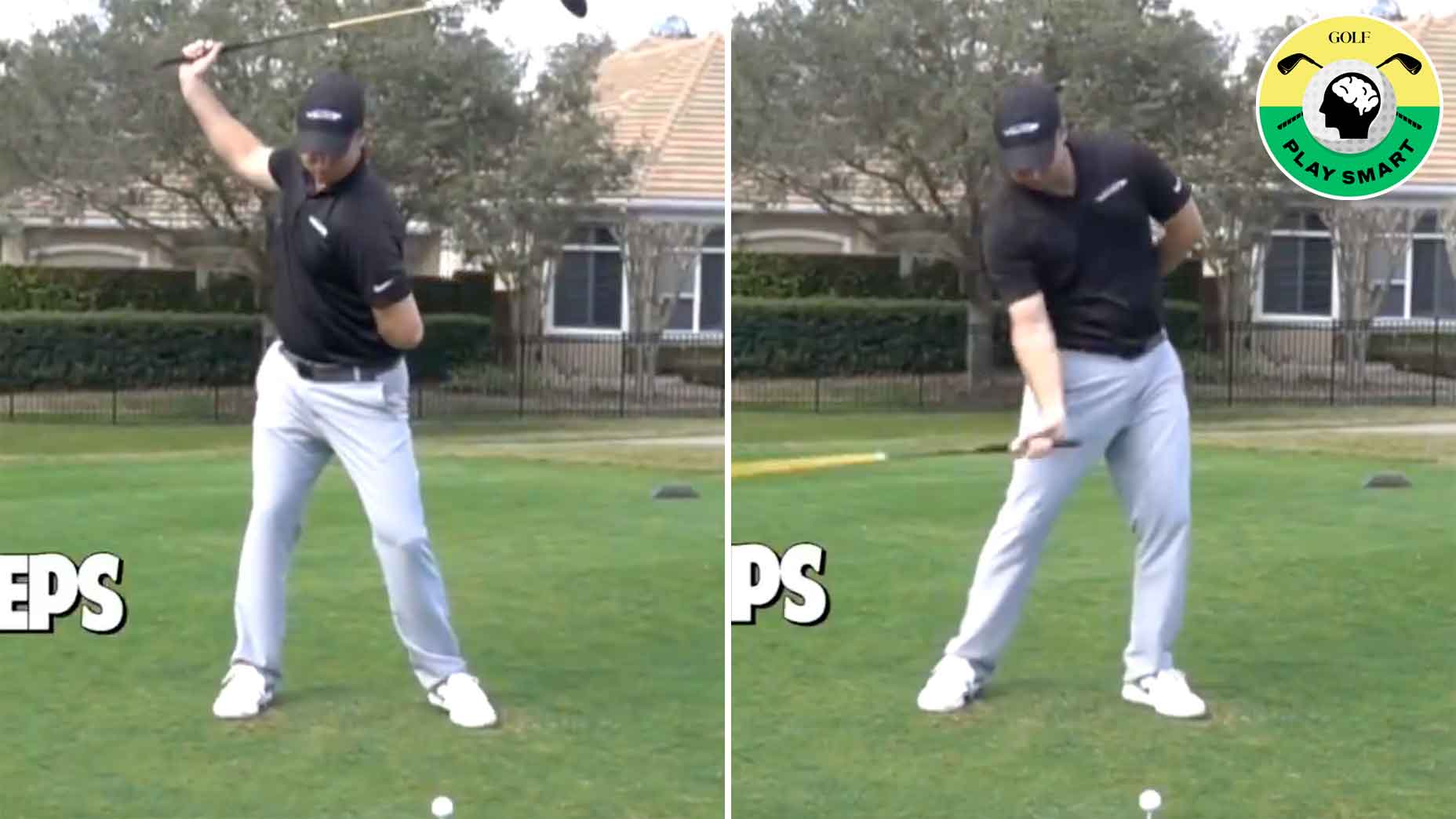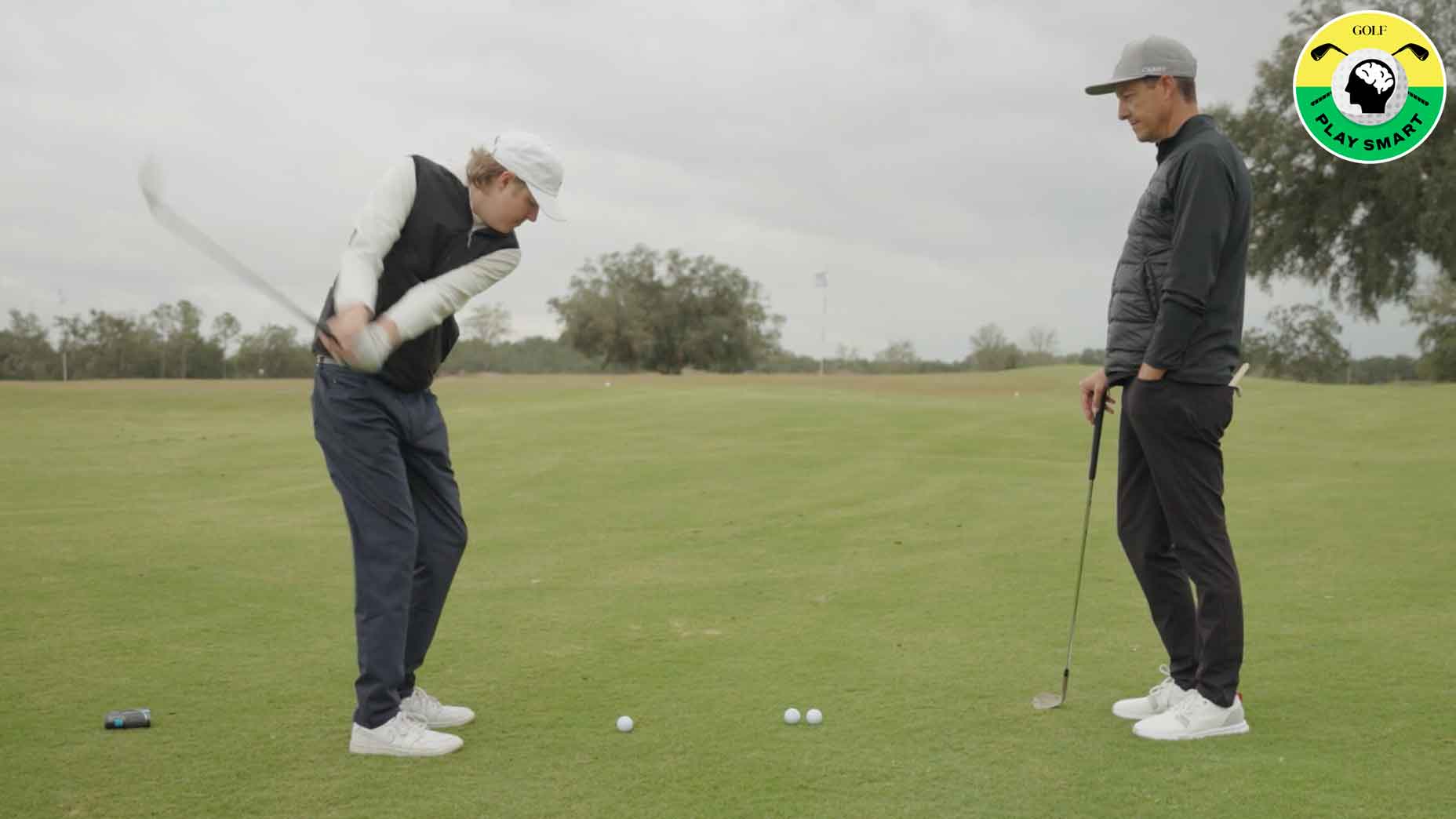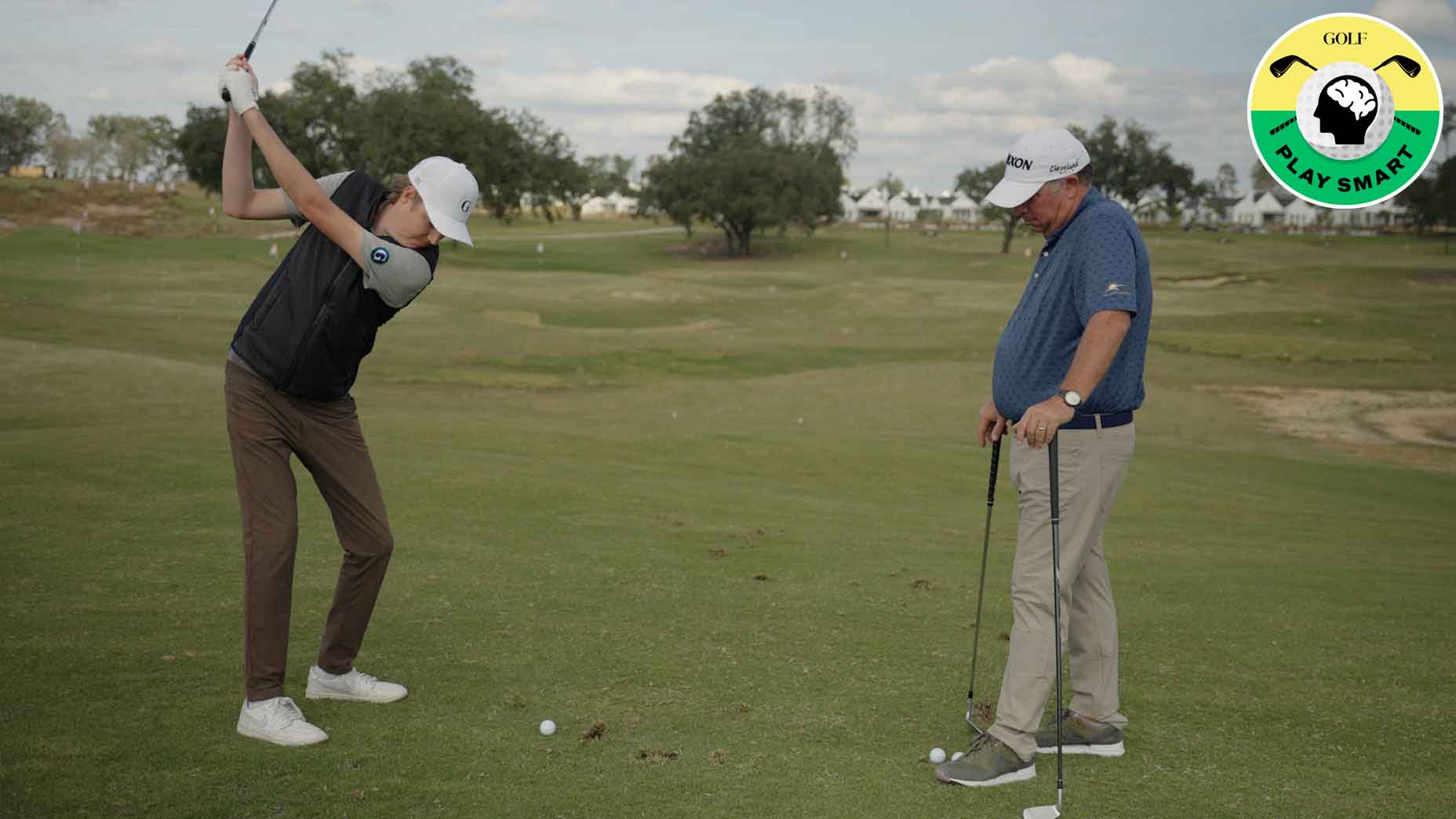Welcome to Play Smart, a game-improvement column that drops every Monday, Wednesday and Friday from Game Improvement Editor Luke Kerr-Dineen to help raise your golf IQ and play smarter, better golf.
Homo sapiens have evolved to be pretty well at reacting in the wild, and for good reason. Looking up and seeing a branch free-falling toward you, or turning around in the woods to see a bear staring back at you — these aren’t moments for careful deliberation. It’s time to move, and fast.
Those base survival instincts were ingrained over a process that spanned millions of years, and they didn’t suddenly disappear. The human brain became hard-wired to react quickly to things that happen around us in the wild. “A predator needs to be fast or the predator will go hungry. Or a frog needs to react fast or the frog will be eaten,” Dr. Matthias Grabenhorst, an author of numerous studies examining humans’ ability to react, says. “These very fundamental things. They are evolutionary.”
Then one day in Scotland — or maybe Holland, depending on who you talk to — one of those humans thought it’d be fun to pick up a stick and hit a golf ball towards a hole. For whatever reason it stuck, and now we pay people millions of dollars to watch them do it.
Those survival instincts didn’t suddenly disappear. They’re innate within us, and they govern the way we think, act, and even the way we swing a golf club. And recently, an increasing number of players are working with experts to figure out how to use those instincts to play better golf.
Humans’ ability to react well, and quickly, generally lends itself well to professional sports. In other sports, the concept of reacting sits somewhere between an assumption and an afterthought. A wide receiver loses his coverage and reacts instantaneously by catching a ball that is already rocketing towards them; when a batter recognizes a pitch he’s been waiting for, he’s not thinking about needing to react to it — he simply does. Mostly, the trick is learning to stay clear-headed and not overreact as the chaos unfolds around you.
But golf is different. Golfers control the clock. They decide when to start their swing. And while their blood may be pumping down the stretch in contention, what about the rest of the field who made the cut, aren’t threatening the top 5, but still want to play well and cash a bigger check? The truth is, in the midst of a 5+ hour round with nothing to play for, there are times when golf can give you too much to think about. Or in the words of Brooks Koepka, it can even become a little boring.
Harnessing that instinctual ability to react is an idea that has been sweeping through Tour players in recent years. Listen closely, and you’ll start hearing pros talking about it everywhere.
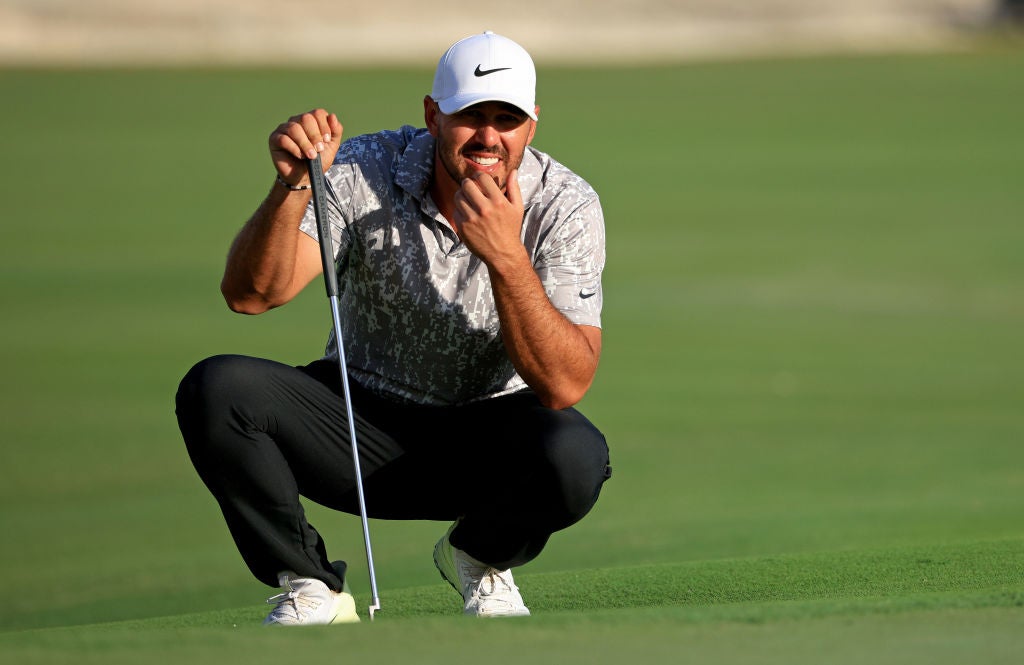
“For me it’s about eliminating as many thoughts as possible over the ball and just reacting,” Lucas Glover told me over the summer.
“When you get a little older, you start thinking a little too much,” Annika Sorenstam said after winning the U.S. Senior Women’s Open. “Now I’m trying not to think. I’m just trying to go out there and be more reactive.”
Collin Morikawa said something similar when talking about working through his putting issues. “I was so focused on trying to hit this great putt that I just wasn’t reacting to what I was doing. I react when I hit an iron shot, why can’t I do that when I’m over the putter?” he said. “Be an athlete that reacts to your target.”
David Duval agrees: “You need to create and make this game reactionary.”
So does Rory McIlroy: “It’s very easy on the range to hit a ball, hit another one. Now, every ball I was very disciplined, I stood back, visualized what I wanted to do with that shot, tried to be what I’m trying to do and just let my body react to what I see.”
Golfers want their instincts to take over, and often need a sense of urgency in an otherwise static game for it to happen. The challenge is learning how to create one.
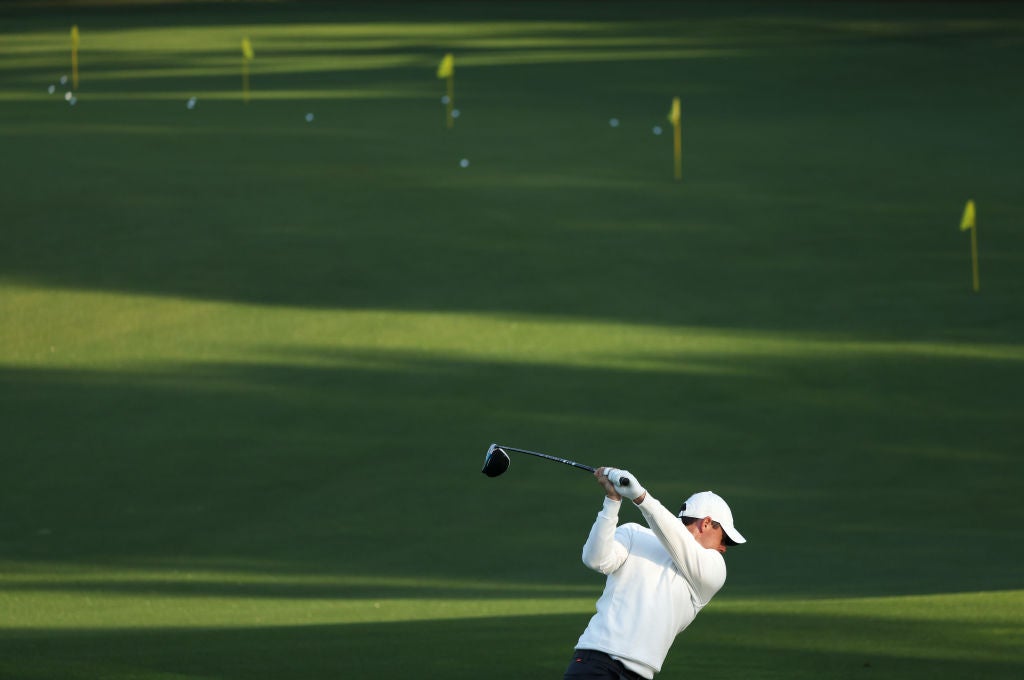
Bryson DeChambeau, Jordan Spieth and others have been working with a company called Neuropeak Pro, which trains players across all sports to use faster or slower breathing to raise and lower their heart rate on command so it remains in a zone that’s optimal for focus.
“Nine times out of 10 with golfers, they’re hitting bad shots because their brain has slipped into a bored, too relaxed state,” says Nick Bolhuis, Vice President at Neuropeak. “It’s kind of unique to golf.”
“Some of these guys, they just kind of move along at a snail’s pace … shallower, quicker breathing will induce that sympathetic or that stress response,” he adds. “It kind of lights that fire a little bit. It’s the proverbial flow state, or being in the zone, where your body is able to perform at its best.”
And then there are more traditional methods. Tony Finau has experimented with looking at the hole as he putts — a new-age technique that research has shown improves performance by focusing golfers on their target, and letting them react to it. Others have experimented by forgoing practice swings on putts, or simply hitting the ball faster.
GOLF Top 100 Teacher Eric Alpenfels and his research partner Dr. Bob Christina recently conducted a study among golfers of various skill levels that found golfers actually hit worse shots when they took as much time as they desired to hit a ball — and improved when a they were given a shot-clock style countdown to react to, starting their swing when the count got to zero. This phenomenon can be explained in part by a study Grabenhorst published earlier this year, which describes human reaction like a bell curve: Good instantaneously, improves with a bit of lead time, and then begins to decline rapidly if you have too much time to think.
“Your motor system, it’s very precise, but it’s not an atomic clock. There are always, errors,” he says. “But the literature says your [reaction] after one second is much more accurate than your reaction after 10 seconds, and so on.”
Grabenhorst explains that humans tend to react best to future events based on when they think they are about to happen. In layman’s terms: If they think something is going to happen very soon, they’re likely to react well to it. If they think it’s going to happen at some point in the future, they start overthinking and eventually even lose interest, both of which hurts their ability to react.
“In jazz, for example, you can worry all day long about which note to play, when to play it, how loud, how soft, what is this guy next to me signaling,” he says. “You end up playing really bad music. The thing here is you have to let go of it and just do the thing based on intuition. And trust your brain to do the things that you’ve trained for.”
Getting their brain out of the way of their body is something recreational golfers think about often. Turns out pros do, too. The secret of how best to do it has yet to be uncovered. But when it is, it will no doubt reiterate the ever present truth at the heart of all sports:
See the ball, hit the ball.
Latest In Instruction

Luke Kerr-Dineen
Golf.com Contributor
Luke Kerr-Dineen is the Game Improvement Editor at GOLF Magazine and GOLF.com. In his role he oversees the brand’s game improvement content spanning instruction, equipment, health and fitness, across all of GOLF’s multimedia platforms.
An alumni of the International Junior Golf Academy and the University of South Carolina–Beaufort golf team, where he helped them to No. 1 in the national NAIA rankings, Luke moved to New York in 2012 to pursue his Masters degree in Journalism from Columbia University. His work has also appeared in USA Today, Golf Digest, Newsweek and The Daily Beast.
